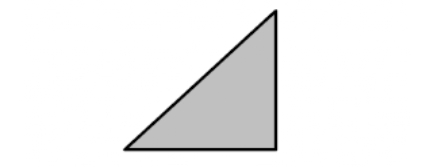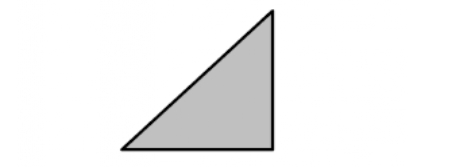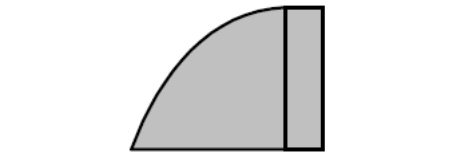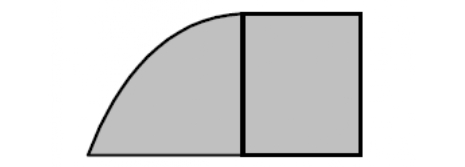30. Masonry Properties#
List of symbols:
\(\begin{array}{ll}f_{m} & = \text { compressive strength of masonry } \\ f_{m, l} & = \text { compressive strength of masonry in longitudinal direction } \\ f_{b} & = \text { compressive strength of unit } \\ f_{\text {mo }} & = \text { compressive strength of mortar } \\ f_{b t, l} & = \text { tensile strength of units in longitudinal direction of the units } \\ f_{b t, s} & = \text { splitting tensile strength of units } \\ f_{t} & = \text { tensile strength of masonry } \\ f_{v} & = \text { cohesion } \\ a & = \text { coefficient } \\ b & = \text { coefficient } \\ c & = \text { coefficient } \\ c_{1} & = \text { ratio } E_{m} / f_{m} \\ c_{2} & = \text { ratio } f_{b t, l} / f_{b} \\ c_{3} & = \text { ratio } f_{b t, s} / f_{b} \\ Y_{1} & = \text { a log-normal variable taking into account uncertainties in the calculation of the compressive strength of masonry } \\ Y_{2} & = \text { a log-normal variable taking into account uncertainties in the calculation of the modulus of elasticity } \\ Y_{3} & = \text { a log-normal variable taking into account uncertainties in the calculation of the tensile strength of masonry } \\ Y_{4} & = \text { a log-normal variable taking into account uncertainties in the calculation of the tensile strength of unit } \\ Y_{5} & = \text { a log-normal variable taking into account uncertainties in the calculation of the cohesion } \\ Y_{6} & = \text { a log-normal variable taking into account uncertainties in the calculation of the friction coefficient } \\ \varepsilon & = \text { strain } \\ \mathcal{E}_{u} & = \text { ultimate strain } \\ E_{0} & = \text { modulus of elasticity } \\ \mu & = \text { friction coefficient } \\ \sigma & = \text { stress } \\ h_{k} & = \text { buckling length of wall } \\ t & = \text { thickness of wall }\end{array}\)
Abbreviations:
\(\begin{array}{ll}\text { LC } & \quad \text { Lightweight concrete } \\ \text { NC } & \quad \text { Normal density concrete } \\ \text { C } & \quad \text { Concrete } \\ \text { CS } & \quad \text { Calcium silicate } \\ \text { AAC } & \quad \text { Autoclave aerated concrete } \\ \text { CB } & \quad \text { Clay brick } \\ \text { GPM } & \quad \text { General purpose mortar } \\ \text { TLM } & \quad \text { Thin layer mortar }\end{array}\)
30.1. Scope#
Masonry is made of units and mortar which show strong regional differences in the material properties and dimensions. Since stochastic treatment of masonry is relatively new, all the values given in the following represent prior values and may be subject to updating techniques. Also, the values (except the values for the compressive strength of masonry) are values derived from tests on single elements. The values might be different for full walls due to spatial variation.
This section especially deals with unreinforced masonry made of artificial units that meet the requirements of the national manufacturing codes. Masonry is widely used as an unreinforced material but in certain countries reinforced solutions are common (e.g. in earthquake regions). For reinforced masonry, additional information is required for the stochastic modelling of the reinforcing steel (s. chapter 26.).
30.2. Basic Properties#
The main property of masonry is the compressive strength \(f_{m}\) which is determined on standard test specimens (so called RILEM specimens which are 5 units tall, 2.5 units wide and 1 unit thick) tested according to standard conditions (RILEM TC 76-LUM). Other properties, such as the modulus of elasticity are related to the compressive strength. However, some properties - like the friction coefficient - directly depend on the used type of units and mortar.
Masonry only provides very small tensile strength perpendicular to the bed joints which therefore is often neglected. However, the flexural tensile strength of masonry may have a large effect on the load-carrying capacity of slender walls and should be considered in a probabilistic analysis. The flexural tensile strength parallel to the bed joints often has to be taken into account if walls are subjected to lateral loads (wind, earth pressure).
The shear capacity of masonry walls depends on the tensile strength of the units (shear failure) and on the cohesion between units and mortar (sliding failure). Additionally, the friction coefficient is influencing the tensile strength parallel to the bed joints and the sliding shear capacity.
30.2.1. Compressive strength of masonry#
The compressive strength of masonry depends on the compressive strength of units and mortar. The following equation (30.1) is recommended for the determination of the compressive strength.
In case of thin layer mortar, the mortar quality does not influence the compressive strength of masonry and so the relationship becomes
with
\(f_{m} =\) mean of the compressive strength of masonry
\(f_{b} =\) mean of the compressive strength of units in vertical direction
\(f_{\text {mo }}=\) mean of the compressive strength of mortar
\(K=\) coefficient, see Table 30.1
\(\alpha=\) coefficient, see Table 30.1
\(\beta =\) coefficient, see Table 30.1
The slenderness \(\lambda=h_{k} / t\) plays an important role in the determination of the masonry compressive strength. To transform the obtained compressive strength to the reference slenderness of \(\lambda=5\), the following equation can be used.
The parameters \(K, \alpha\), and \(\beta\) are prior values and should be updated by use of test data. The compressive strength of masonry \(f_{m, l}\) in longitudinal direction (only for masonry with grouted head joints) is thought to be 50% of the masonry compressive strength \(f_{m}\) according to equation (30.1) and (30.2).
Masonry |
\(n\) |
\(K\) |
\(\alpha\) |
\(\beta\) |
||
|---|---|---|---|---|---|---|
Units |
||||||
Material |
Unit type |
Mortar |
||||
LC |
|
TLM |
35 |
0.85 |
0.84 |
0 |
LC |
full blocks |
LWM |
21 |
0.70 |
0.66 |
0.16 |
LC |
hollow blocks |
LWM |
59 |
0.86 |
0.57 |
0.14 |
LC |
full blocks |
GPM |
61 |
0.85 |
0.72 |
0.09 |
LC |
hollow blocks |
GPM |
106 |
0.89 |
0.69 |
0.05 |
LC |
full blocks |
TLM |
20 |
0.63 |
1.00 |
0 |
AAC |
regular unit |
NM |
140 |
0.98 |
0.68 |
0.02 |
AAC |
regular unit |
NM |
140 |
0.99 |
0.69 |
0 |
AAC |
regular unit |
LM |
17 |
0.80 |
0.64 |
0.09 |
AAC |
regular unit |
LM |
17 |
0.99 |
0.64 |
0 |
AAC |
plane element |
DM |
162 |
0.63 |
1.00 |
0 |
AAC |
plane element |
DM |
162 |
0.83 |
0.86 |
0 |
NC |
hollow block |
GPM |
15 |
0.03 |
1.82 |
0.23 |
CS |
full |
GPM |
276 |
0.70 |
0.74 |
0.21 |
CS |
block |
GPM |
24 |
0.44 |
0.92 |
0.17 |
CS |
perforated |
GPM |
108 |
0.85 |
0.57 |
0.20 |
CS |
hollow |
GPM |
70 |
0.99 |
0.64 |
0.05 |
CS |
plane elements |
TLM |
66 |
0.53 |
1.00 |
0 |
CB |
full |
GPM |
55 |
0.73 |
0.73 |
0.16 |
CB |
perforated |
GPM |
342 |
0.55 |
0.56 |
0.46 |
CB |
lightweight |
TLM |
9 |
0.75 |
0.72 |
0 |
CB |
lightweight |
LWM 21 |
17 |
0.67 |
0.50 |
0.05 |
CB |
lightweight |
LWM 21 |
17 |
0.18 |
1.00 |
0 |
CB |
lightweight |
LWM 36 |
13 |
0.47 |
0.82 |
0 |
CB |
lightweight |
LWM 36 |
13 |
0.28 |
1.00 |
0 |
CB |
lightweight |
GPM |
28 |
0.26 |
0.82 |
0.42 |
30.2.2. Modulus of elasticity#
The modulus of elasticity is commonly related to the compressive strength of masonry. For the stochastic modelling, the following equation (30.4) is recommended.
with
\(E_{m}=\) mean of modulus of elasticity of masonry
\(c_{1}=\) ratio \(E_{m} / f_{m}\) according to Table 30.2
The parameter \(c_{1}\) is a prior value and should be updated by use of test data.
30.2.3. Flexural tensile strength of masonry#
The flexural tensile strength of masonry can be divided into flexural tensile strength perpendicular and parallel to the bed joints. It is a strongly scattering property and depends mainly on the mortar. The execution of the head joints (unfilled (uf) or filled (f)) was also found to have small influence. Since only thin layer mortar is providing sufficiently reliable cohesion, tests of the flexural tensile strength were more or less only conducted on masonry with TLM. Values of the flexural tensile strength for masonry with TLM can be found in Table 30.3 and Table 30.4.
Unit |
Head |
Number |
\(f_{t, m, p a}\) in |
Range of |
|
|---|---|---|---|---|---|
Type |
Compressive strength of |
||||
Lightweight |
>8, >12 |
uf |
2 |
0.21 |
0.20 ; 0.22 |
CS |
>12, >20 |
f |
6 |
0.51 |
0.36 \(\div\) 0.69 |
CS |
>28 |
f |
2 |
1.05 |
0.96 ; 1.14 |
CS |
>8\(\ldots\)>28 |
uf |
11 |
0.71 |
0.38 \(\div\) 0.97 |
Perforated CS |
>12 |
f |
4 |
0.48 |
0.45 \(\div\) 0.51 |
Perforated CS |
>12 |
uf |
4 |
0.25 |
0.29 \(\div\) 0.35 |
AAC |
> |
\(\mathrm{f}\) |
3 |
0.23 |
0.22 \(\div\) 0.23 |
AAC |
>4 \(\ldots\) >8 |
\(\mathrm{f}\) |
7 |
0.45 |
0.28 \(\div\) 0.64 |
AAC |
>2, >4 |
uf |
6 |
0.20 |
0.16 \(\div\) 0.24 |
\(^a\) uf= unfilled, f= filled
Unit |
Head |
Number |
\(f_{t, m, p a}\) in |
Range of |
|
|---|---|---|---|---|---|
Unit |
Head |
\(n\) |
\(f_{t, m, p a}\) in |
Range of |
|
:—: |
:—: |
:—: |
:—: |
:—: |
:—: |
Type |
Compressive strength of |
||||
Lightweight |
>8, >12 |
uf |
3 |
0.28 |
0.26 \(\div\) 0.30 |
\(\mathrm{CS}\) |
- |
uf/f |
8 |
0.56 |
0.35 \(\div\) 0.73 |
Perforated CS |
- |
f |
4 |
0.34 |
0.23 \(\div\) 0.48 |
AAC |
>2 \(\ldots\)>8 |
uf/f |
23 |
0.40 |
0.25 \(\div\) 0.81 |
Concrete |
>2 \(\ldots\)>6 |
f |
5 |
0.33 |
0.22 \(\div\) 0.44 |
\(^a\) uf= unfilled, f= filled
30.2.4. Tensile strength of the units#
For the tensile strength in longitudinal direction of the units:
For the splitting tensile strength of the units:
with
\(f_{b t, l}=\) mean of tensile strength of the unit in longitudinal direction
\(f_{b t, s}=\) mean of splitting tensile strength of the units
\(c_{2}=\operatorname{ratio} f_{b t, l} / f_{b}\)
\(c_{3} = \operatorname{ratio} f_{b t, s} / f_{b}\)
For the large variety of masonry products which all differ in perforation and material, the prior values given in Table 30.5 can be used.
Type of unit |
Number of |
\(\boldsymbol{c}_{\mathbf{2}}[-]\) |
Number of |
\(\boldsymbol{c}_{\mathbf{3}}[-]\) |
|---|---|---|---|---|
CS |
18 |
0.063 |
40 |
0.070 |
Perforated CS |
19 |
0.035 |
31 |
0.060 |
CB |
9 |
0.040 |
9 |
0.070 |
Perforated CB |
20 |
0.030 |
29 |
0.040 |
Lightweight perforated CB |
54 |
0.010 |
- |
- |
Lightweight concrete hollow |
8 |
0.080 |
10 |
0.090 |
Full lightweight concrete block |
23 |
0.080 |
13 |
0.110 |
AAC, plane element |
24 |
0.110 |
24 |
0.090 |
AAC, plane element 2 |
7 |
0.180 |
9 |
0.150 |
AAC, plane element 4,6,8 |
8 |
0.110 |
9 |
0.120 |
Hollow Concrete block |
2 |
0.080 |
3 |
0.040 |
30.2.5. Cohesion#
The values \(f_{v, m}\) for the cohesion can be taken from Table 30.6. Please note that these values have been derived from the characteristic values provided in [30.01] by application of the stochastic models presented in Table 30.13 and assuming the characteristic values to represent 5%-quantiles. The values for the cohesion are prior values and require updating by use of test data.
\(f_{v, m}\) in \(MN/m^2\) |
|||
|---|---|---|---|
GPM |
GPM |
TLM |
LWM |
20 and higher |
0.42 |
0.65\(^{\mathrm{a}}\) |
0.26 |
10 \(\div\) 19 |
0.37 |
0.65\(^{\mathrm{a}}\) |
0.26 |
5 \(\div\) 9 |
0.28 |
0.65\(^{\mathrm{a}}\) |
0.26 |
2.5 \(\div\) 4.5 |
0.14 |
0.65\(^{\mathrm{a}}\) |
0.26 |
1 \(\div\) 2 |
0.04 |
0.65\(^{\mathrm{a}}\) |
0.26 |
\(^a\) divide by 2 if the perforation is more than 15% of the cross-section
30.2.6. Friction coefficient#
The friction coefficient \(\mu\) is normally estimated with a mean value of 0.8 . In case of in-plane shear a reduction may become necessary to account for possible overturning of the units.
30.2.7. Stress-strain relationship#
In unified form, the stress-strain relationship of masonry under compression is determined by:
The value \(k_{0}\) represents the slope of the unified stress-strain curve at origin. Values for the different materials can be taken from Table 30.7.
Lightweight con- |
Hollow clay bricks |
CS hollow block |
CS full block |
|---|---|---|---|
|
|
|
|
\(\mathrm{k}_{0}=1.0\) |
\(\mathrm{k}_{0}=1.0\) |
\(\mathrm{k}_{0}=2.0\) |
\(\mathrm{k}_{0}=2.0\) |
\(\varepsilon_{\mathrm{f}}=1.2~‰\) |
\(\varepsilon_{\mathrm{f}}=2.0~‰\) |
\(\varepsilon_{\mathrm{f}}=2.0~‰\) |
\(\varepsilon_{\mathrm{f}}=2.0~‰\) |
\(\varepsilon_{\mathrm{u}}=1.2~‰\) |
\(\varepsilon_{\mathrm{u}}=2.0~‰\) |
\(\varepsilon_{\mathrm{u}}=2.5~‰\) |
\(\varepsilon_{\mathrm{u}}=3.5~‰\) |
30.3. The probabilistic model#
30.3.1. Compressive strength#
The compressive strength of masonry depends on the compressive strength of units and mortar. The following equation (30.10) is recommended for the determination of the compressive strength.
with
\(f_{m} =\) compressive strength of masonry according to equation (30.1) or (30.2)
\(Y_{1}=\) a log-normal variable accounting for uncertainties in the calculation of the compressive strength, see Table 30.8
Unit |
Mortar |
Distr. |
Mean |
CoV |
|---|---|---|---|---|
CS |
TLM |
LN |
1.0 |
20% |
AAC |
TLM |
LN |
1.0 |
20% |
Large sized units CS |
TLM |
LN |
1.0 |
16% |
Large sized units AAC |
TLM |
LN |
1.0 |
14% |
Clay bricks |
GPM |
LN |
1.0 |
17% |
30.3.2. Modulus of elasticity#
The modulus of elasticity is commonly related to the compressive strength of masonry. For the stochastic modelling, the following equation (30.11) is recommended. A first estimate for the stochastic parameters of the log-normal variable \(Y_{2}\) can be found in Table 30.7.
with
\(E_{m}=\) modulus of elasticity according to equation (30.4)
\(Y_{2}=\) a log-normal variable
Unit |
Mortar |
Distr. |
Mean |
CoV |
|---|---|---|---|---|
all |
all types |
LN |
1.0 |
25% |
30.3.3. Flexural tensile strength of masonry#
There is significant lack of data for the tensile strength of masonry. Nevertheless, the values in Table 30.3 may be taken as first estimates for the means. The flexural tensile strength of masonry may be modelled as follows:
with
\(f_{t, m} =\) mean of flexural tensile strength according to Table 30.3 and Table 30.4
\(Y_{3} =\) a log-normal variable
The stochastic parameters for the log-normal variable \(Y_{3}\) can be found in Table 30.10 depending on the direction of the flexural tensile strength (parallel or perpendicular to the bed joint). Please note, these values only represent prior parameters and require updating and validation by use of test data.
Unit |
Mortar |
Direction |
Distr. |
mean |
CoV |
|---|---|---|---|---|---|
CS |
TLM |
parallel |
LN |
1.0 |
30% |
CS |
TLM |
perpen. |
LN |
1.0 |
35% |
AAC |
TLM |
parallel |
LN |
1.0 |
26% |
AAC |
TLM |
perpen. |
LN |
1.0 |
30% |
Lightweight perforated CB |
TLM |
parallel |
LN |
1.0 |
30% |
Lightweight perforated CB |
TLM |
perpen. |
LN |
1.0 |
35% |
Concrete blocks |
TLM |
perpen. |
LN |
1.0 |
30% |
30.3.4. Tensile strength of the units#
The shear capacity of masonry walls is strongly influenced by the tensile strength of units. As for many materials, the tensile strength can be described as function of the compressive strength. It was found that the tensile strength in longitudinal direction describes the shear capacity of CS and AAC units well while in case of CB, the splitting tensile strength is preferable.
For the tensile strength in longitudinal direction of the units of CB and AAC units:
For the splitting tensile strength of CB units:
with
\(f_{b t, l}=\) the tensile strength of the units in the longitudinal direction according to equation (30.5)
\(f_{b t, s}=\) the splitting tensile strength of the units according to equation (30.6)
\(Y_{4}=\) a log-normal variable accounting for the large scatter of the tensile strength of the units. Values can be found in Table 30.11.
Unit |
Distr. |
Mean |
CoV |
|---|---|---|---|
CS |
LN |
1.0 |
26% |
AAC |
LN |
1.0 |
16% |
Clay bricks |
LN |
1.0 |
24% |
30.3.5. Cohesion#
The cohesion may be modelled according to equation (30.15). A first estimate for the stochastic parameters for the random variable \(Y_{5}\) may be taken from Table 30.12 for different combinations of units and mortar.
with
\(f_{v, m}=\) mean of the cohesion according to Table 30.6
\(Y_{5}=\) a log-normal variable according to Table 30.12
Unit |
Mortar |
Dist. |
Mean |
CoV |
|---|---|---|---|---|
AAC |
TLM |
LN |
1.0 |
35% |
CS |
TLM |
LN |
1.0 |
35% |
CB |
IIa |
LN |
1.0 |
40% |
30.3.6. Friction coefficient#
The friction coefficient may be modelled according to equation (30.16) by use of the stochastic parameters found in Table 30.11.
with
\(\mu_{m} =\) 0.8
\(Y_{6}=\) a log-normal variable according to Table 30.13
Unit |
Distr. |
Mean |
CoV |
|---|---|---|---|
CS |
LN |
1.0 |
19% |
AAC |
LN |
1.0 |
19% |
References
European Committee for Standardization. Design of masonry structures. Standard EN 1996-1-1 (Eurocode 6), Beuth Verlag, Berlin, 2005. AC: 2009.
Additional References
Schubert, P. (2010): Eigenschaftswerte von Mauerwerk, Mauersteinen und Mauermörtel, Mauerwerk-Kalender 2010, Ernst & Sohn, Berlin
Glowienka, S. (2007): Zuverlässigkeit von Mauerwerkswänden aus großformatigen Steinen, doctoral thesis, Technische Universität Darmstadt, Darmstadt, in German
Schueremans, L. (2001): Probabilistic Evaluation of structural masonry, doctoral thesis, University of Leuven, Belgium, 2001
Glock, C. (2004): Traglast unbewehrter Beton- und Mauerwerkswände, doctoral thesis, Technische Universität Darmstadt, Darmstadt, in German
Brehm, E. (2011): Reliability of Unreinforced Masonry Bracing Walls, doctoral thesis, ISBN 978-3-942886-02-4, Technische Universität Darmstadt




